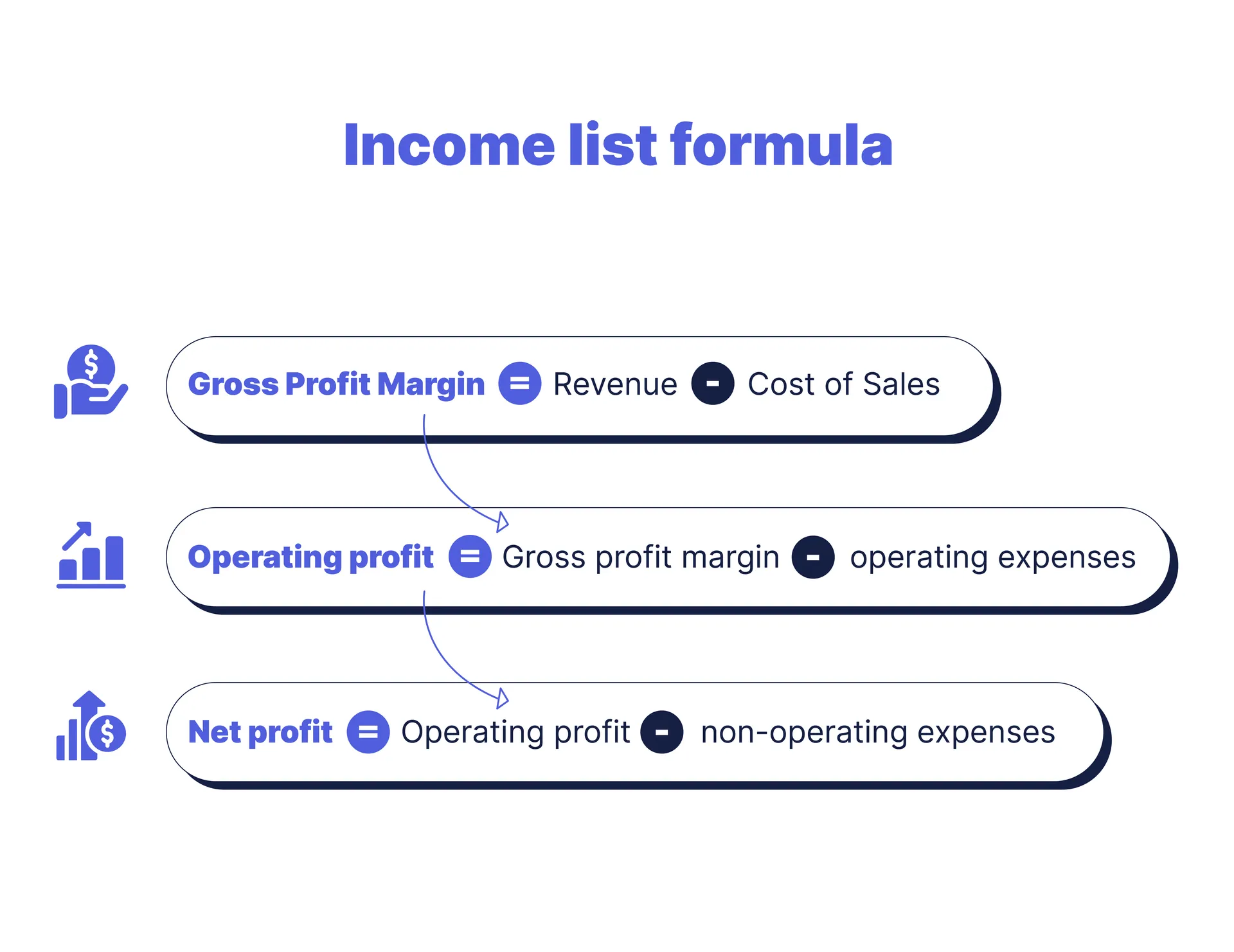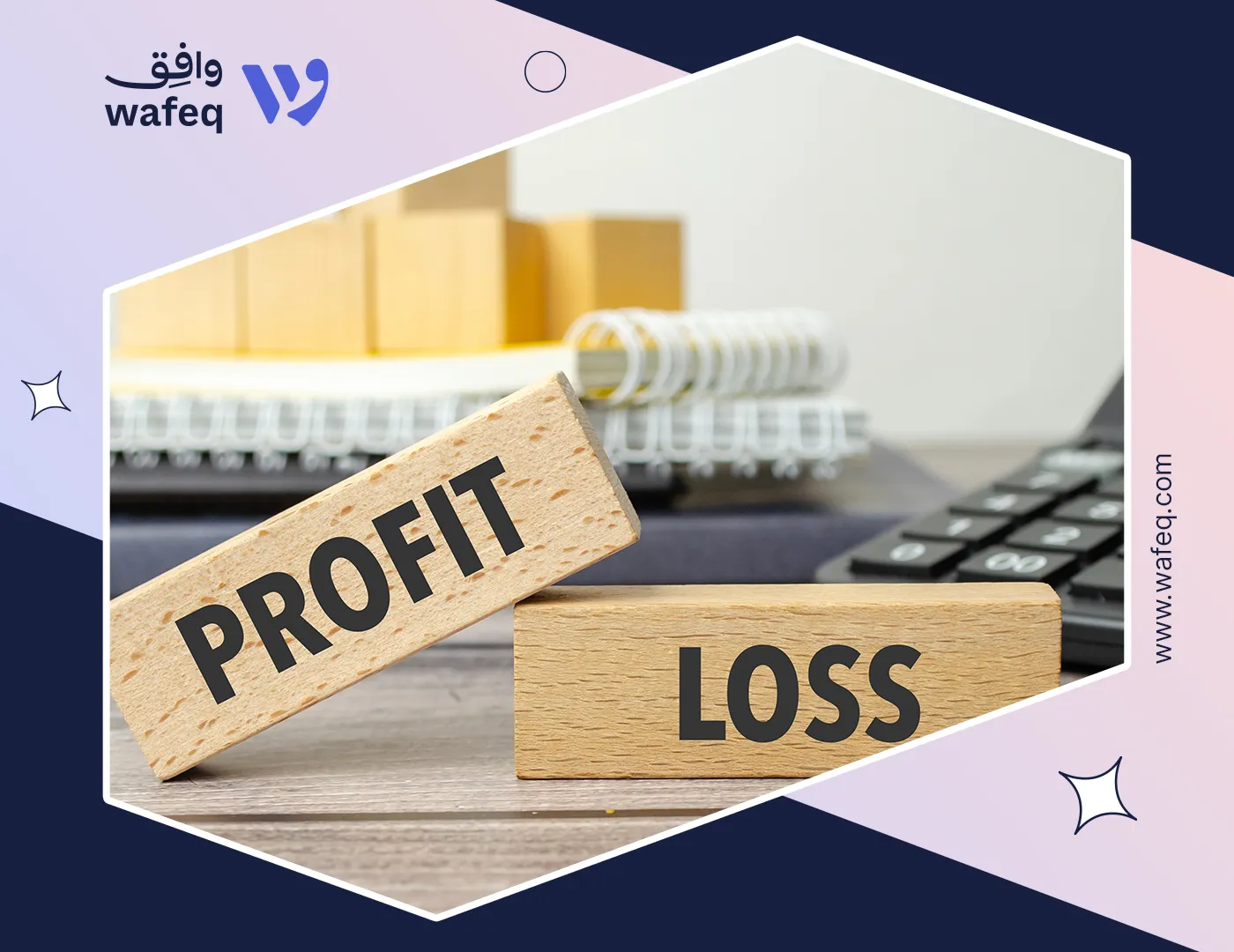What is an income statement?

In financial management, you rely on various reports and statements to become fully aware of your finances. For example, in a company's annual reports, there's a special section dedicated to financial statements, accompanied by clarifications across different branches. In this article, we will talk in detail about the income statement.
What is the income statement?
The income/profit and loss statement identifies revenues, expenses, and net profit during a specific period.
We will start with the income statement and review its components and purpose.
Components of Income Statement
The income statement is the primary indicator for measuring the company's performance, and it consists of the following elements:
Revenues, from which the cost of sales is deducted, produce the total profit margin. Operating expenses are deducted from the total profit margin, resulting in an operating profit.
Then, non-operating expenses are deducted from the operating profit to have the net profit.

Here are the details of these items:
Revenues:
Revenue is the gains generated from selling the company’s main product or service, which matters to the investor. For example, Apple generates revenue from selling iPhones, Macs, and iPads, and Uber achieves sales from passenger-to-driver service and freight services through its platform.
These revenues should not include any payments that are not related to the company's main activity, such as the return on deposits, because the investor measures the efficiency of the company's business model in making profits and the strength and competitive advantage of the product or service from the revenue number.
Sales cost:
It is termed cost of sales for trading or service-providing companies like Uber, and "cost of goods sold" for industrial companies like Apple.
Whether the cost of sales or cost of goods sold, this item includes costs directly related to sales/revenue, like wages for workers and the cost of raw materials used to manufacture iPhones. Or in Uber's example, the cost of providing services, expenses for maintaining and securing the platform or application, and expenses necessary to process payments made on the Uber application.
Gross Profit Margin:
After deducting the cost of sales from the revenues, the total profit margin is generated. It shows the investor of the company’s profit from selling the product or providing the service. For example, if it was $10, then this means that the company earns $10 from each product.
For example if revenues ($100) - the cost of sales ($90) = profit margin ($10)
Operating Expenses:
They are the expenses necessary to operate the company and manage the sale of the product or service but not directly related to sales, such as general and administrative expenses, selling expenses, depreciation, research and development expenses, and others.
These expenses are costs that are essential for the management and sale of the company's main product or service.
Start for free
You can now use Wafeq to manage your business finances and create a Profit and Loss statement with just one click.
Operating Profit:
Operating profit comes from deducting operating expenses from the total profit margin. This profit is considered the one that measures the company's performance and will be repeated in the future because it results from the company's main activity. When you read the income statement, do not let anything distract you from this profit.
Non-Operating Expenses/Losses/Revenue:
This item includes all expenses/losses/returns that are not directly related to the company's main activity, such as restructuring expenses, losses, or returns resulting from the sale of some assets. These items are non-recurring and, therefore should not be relied upon when evaluating the company's performance.
Profit before interest and taxes:
After deducting non-operating expenses, losses, and returns from the operating profit, you will have profit before removing interest and taxes. For your information, interest and taxes are from non-operating expenses, but they are separated to see the company’s ability to pay them, as they are among the costs that must be paid according to the law and contractual obligations.
Net profit:
Net profit is the outcome of the above points, which is what the shareholders will have at the end of the year. The company’s management decides if this profit will be distributed to the shareholders as dividends or/and goes to retained earnings in the balance sheet.
At the bottom of the list, you'll find an indicator termed "share of profit per share," which is calculated by dividing the net profit by the number of shares. Note that this doesn't necessarily mean the shareholder will receive it; it represents the shareholder's portion should the company's management decide to distribute all profits.
Purpose and Uses of Income Statement:
Also known as the profit and loss statement or the income and expense statement, its purpose is to:
It provides readers or investors with insights into the company's performance over a specific period, be it annual or quarterly. It helps understand how the company's business model operates. The income statement details revenues, expenses, profits, and losses over a specific period, typically a year. This is unlike the balance sheet, which depicts the company's financial position at a specific point in time.
The income statement indicates whether a company is profitable or not, and identifies the contributing factors. For example, in the case of technology companies, you can know the extent of the company's interest in research and development through the item of research and development expenses in the income statement.
Also, by comparing the numbers of this list over the previous years, you can know whether sales and revenues are growing, declining, or stable, as well as measure the efficiency and ability of the company's management to control expenses by reducing and rationalizing them.
To learn the basic principles of accounting, read the article: Financial accounting basics and principles for beginners




.png?alt=media)









